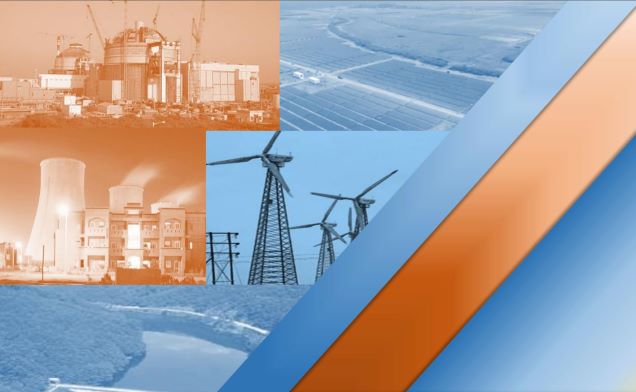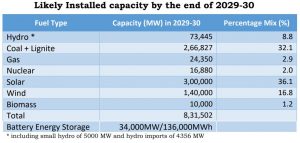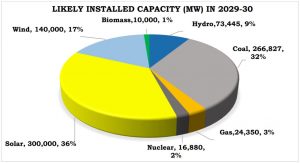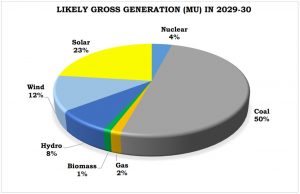

The Central Electricity Authority (CEA), India’s power-planning body, in a report said that India’s renewable energy capacity will sprint ahead and multiply almost six-fold in the next decade, while the share of coal-fired plants in the energy mix will fall to 32% from the current 46%.
The CEA estimates that in the year 2029-30, non-fossil fuel (solar, wind, biomass, hydro & nuclear) based installed capacity is likely to be about 65% of the total installed capacity.


However, the report did add that coal will have a higher share of actual electricity generated because of consistent supply unlike wind and solar, which are erratic in nature during the day. But in generation, coal’s share will fall from 77% to 50% by 2030. Electricity supply from renewable will increase four-fold to 36%, the report said.
“The projected gross electricity generation (BU) during the year 2029-30 is likely to be 2,508 BU comprising of 1,297 BU from Thermal (Coal, Gas and Lignite), 887 BU from Variable RES, 197 BU from Hydro, 101 BU from Nuclear and 26 BU from Biomass” says report.




Power Plants and Power Mix
Coal and lignite plants currently have a total capacity of 200,704 MW, running at 64% utilization. In 2029-30, it is likely to rise to 266,827 MW but the capacity utilization is projected to be a maximum of 55%, on days when green energy supply is relatively low.
Thermal plants would have to run at an even lower utilisation level of 40% on days of heavy generation by renewable energy plants. On such days, green generation would also have to be cut by up to 17%, it said. Gas-fired power plant capacity will be slightly lower than the current 24,937 MW by 2029-30.
The projected mix will be achieved through a five-fold rise in renewable generation capacities, including a near 10-fold rise in solar power capacity, a three-fold rise in wind power capacity, and a 1.5-times rise in nuclear power generation capacity in the next 10 years.
The report also has short term generation dispatch studies on hourly basis to assess the adequacy of various capacities to meet the demand at every instant of time at the lowest possible cost.
To read more click here: ‘Optimal Generation Capacity Mix for the year 2029-30’
Houston headquartered Syzygy Plasmonics has announced the beginning of Front-End Engineering and Design (FEED) with…
State owned THDC India Limited (THDCIL) has announced the successful commencement of COD process of…
The Uttar Pradesh government is preparing to launch the Uttar Pradesh Sustainable Aviation Fuel (SAF)…
India’s cooperative sugar industry is urging the government to revise ethanol procurement prices and extend…
The Indian Biogas Association (IBA) has announced a key step taken to boost biofuels sector…
In a key development that would bolster the development of green hydrogen in the North…